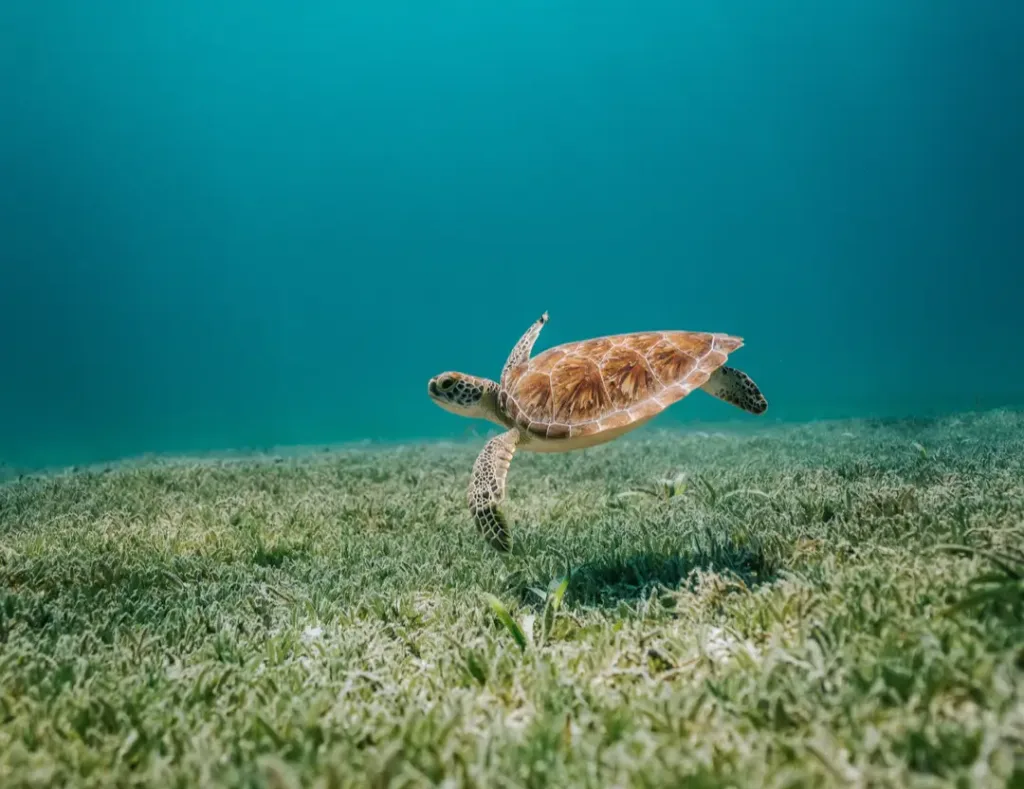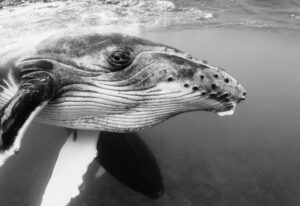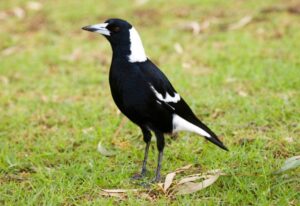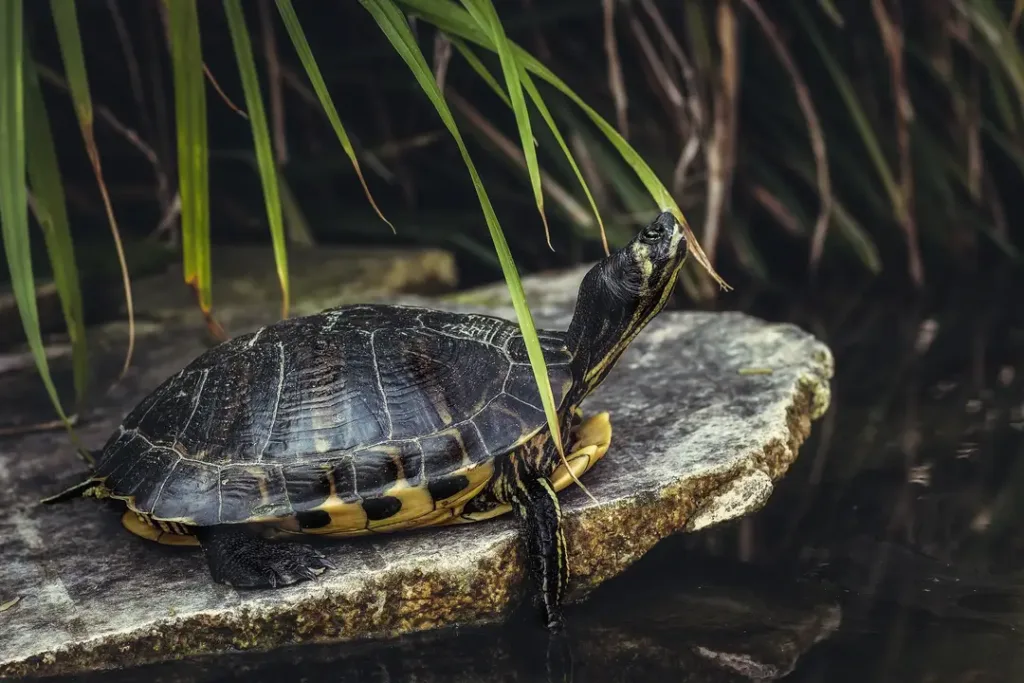Where do turtles go in the winter? It’s an inquiry that relatively few individuals have a response to. Not at all like other creatures that rest during chilly climates, turtles have an exceptional approach to surviving. Their inhumane nature implies their internal heat level is subject to their current circumstance, which represents an issue during winter. Notwithstanding, turtles have figured out how to adapt to the chilly climate.
Freshwater turtles plunge down to the sloppy lower part of lakes where the temperature never gets underneath 1°C. There, they delayed their digestion and can make due for quite a long time without food and with very little oxygen. They remain cognizant while their body processes are delayed down, in contrast to other creatures that rest during hibernation. At the point when the temperature climbs, turtles loll in the daylight to raise their internal heat level.
In any case, on the off chance that the lake ice remains frozen for a really long time, turtles could be in harm’s way. To reveal more insight into this interesting point, we’ve uncovered five shocking destinations where turtles go during winter. Continue to peruse to become familiar with the remarkable ways turtles have adjusted to get by in the cold season.
"A video shot by an underwater drone that demonstrates that turtles are able to move despite having body temperatures of just 1 C in the middle of winter. See the time 1:10"
Where Do Turtles Go in The Winter?
Many birds fly south to avoid the cold winter, but turtles cannot migrate as they are cold-blooded creatures. Turtles are ecotherms and their body temperature depends on the environment, so if the air temperature drops below zero, they will freeze to death. Therefore, they have developed a unique way of surviving the winter. Turtles avoid sub-freezing temperatures by remaining at the bottom of wetlands, lakes, and rivers.
Ice covers the top of these waterbodies, but the bottom remains liquid, allowing the turtles to stay alive. However, they cannot breathe in the water during winter, but they can survive without breathing for months due to their extremely low body temperature, which reduces their oxygen needs. Turtles can absorb oxygen from water through their mouths and even their butts, which is a remarkable survival adaptation.
In winter, the oxygen in the water gets depleted, and some turtle species can survive with low levels of oxygen, while others require higher levels. The turtles that need high levels of oxygen select sites like rivers with flowing water, which has more oxygen.
However, selecting the coldest spot in the wetland can be risky as the turtles may get trapped if the ice gets thicker, resulting in the top of their shells getting frozen, leading to dead tissue, or even death. Therefore, selecting the right spot to spend the winter is crucial for a turtle’s survival. In conclusion, turtles have remarkable survival adaptations that enable them to survive the harsh Canadian winter, but it is still a dangerous time for them.
Where Do Turtles Go in The Winter? Brumation Explained
Turtles are fascinating creatures, and one of their most unique abilities is their ability to brumate. Brumation is the reptilian equivalent of hibernation, and it allows turtles to survive the cold winter months when food is scarce and temperatures drop.
However, brumation is not without its challenges. Unlike mammals, turtles cannot breathe underwater for long periods of time. So, how do turtles breathe while brumating?
The answer lies in a unique ability called cloacal respiration. This means that turtles can breathe through their butt. The opening through which they excrete waste and lay eggs is rich in blood vessels, which allows for gas exchange to occur.
During brumation, turtles’ oxygen needs are minimal because their metabolic rate slows down to match the temperature of their surroundings. However, if the water they are brumating in is not oxygenated enough, they may still experience oxygen deprivation. In such cases, turtles can switch to anaerobic respiration, which does not require oxygen. However, this causes a buildup of lactic acid, which can be harmful to the turtle.
To avoid this, turtles may spend more time basking in the sun in the spring to increase their oxygen levels and reduce the buildup of lactic acid. It is also worth noting that some turtles use the same brumation spot year after year, while others may switch to a new location.
In conclusion, brumation is a complex process for turtles, but their unique ability to breathe through their cloaca allows them to survive the cold winter months. While brumating, turtles may switch to anaerobic respiration if oxygen levels are low, but this can be harmful in the long run. Understanding how turtles breathe while brumating is important for their conservation and protection, and we should continue to study and learn more about these incredible creatures.

How Long Does a Turtle Brumate?
When winter arrives, turtles go into a state of hibernation known as brumation. The duration of the brumation depends on the location of the turtles and the water temperature. Turtles in the north will typically brumate for a longer time than those in the south. The timing of spring also plays a role in the length of the brumation period. Turtles will come out of brumation when the temperature of the water starts to warm up in the spring.
Turtles can brumate for up to eight months, but not all of them will brumate for that long. Some turtles may only brumate for a few months, depending on their location and the temperature of the water. It’s essential for turtles to brumate because it allows them to conserve their energy during the cold winter months when food is scarce.
Overall, the length of time that turtles spend in brumation varies depending on several factors. However, it’s a necessary part of their survival strategy during the winter months.
Where Do Turtles Go in The Winter? Can Turtles Survive in Snow?
When winter arrives and snow covers the ground, you might be curious about how turtles survive. Wild turtles have a special way of getting through the winter. The majority of turtles have already fled to the bottom of the pond, where they are protected from the harsh winter elements, by the time snow arrives.
During the winter, turtles are able to significantly slow down their metabolism. They mostly lie down on the bottom of the pond and occasionally swim around. Because the temperature of the water is more stable than that of the air, they rarely venture to the surface. Consequently, during the winter, turtles can live more comfortably in the water than on land.
Seeing turtles in the snow is not normal. If this is the case, you shouldn’t be alarmed because turtles have developed the ability to withstand cold temperatures over time. However, considering that turtles spend the winter submerged, this is an unusual sight.
However, pet turtles are distinct from wild turtles. You should not expose them to the snow because they do not prepare for winter. Like wild turtles, pet turtles are unable to adjust to changes in temperature and lighting. It is essential to keep them warm during the winter because they are less able to withstand colder temperatures.
In outline, turtles are very much adjusted to endure winter, however, they do as such in a way that is extraordinary to their species. Turtles can survive the winter by slowing down their metabolism and retreating to the bottom of ponds. Notwithstanding, it’s essential to take note of that pet turtles need additional consideration during winter to remain sound and warm.

where do box turtles go in the winter?
Where do box turtles go in the winter? Box turtles hibernate during the winter, which is referred to as brumation in reptiles. Brumation allows the turtles to survive the harsh winter season when food is scarce and temperatures are low. There are several species of box turtles, including the common box turtle, spotted box turtle, and a western box turtle. If you want to allow your pet box turtle to hibernate, you need to prepare properly for it. During the winter season, it is advisable to bring outdoor turtles inside where you can regulate the temperature easily.
Box turtles should not be allowed to hibernate outdoors, as it isn’t suitable for them. The Florida box turtle and Gulf Coast box turtle are two species that rarely hibernate. Hibernation is a natural process for North American box turtles, and it is essential for their survival. During the hibernation period, box turtles slow down their metabolism and remain inactive for several months.
In conclusion, box turtles hibernate during the winter season, which is necessary for their survival. As pet owners, it is crucial to prepare for hibernation properly and provide the necessary conditions for your box turtle to hibernate safely. It is also advisable to keep outdoor box turtles inside during the winter season, when they can be easily monitored and kept warm.
Where Do Snapping Turtles Live in the Winter?
Like different types of freshwater turtles, snapping turtles go into brumation throughout the colder time of year. Nonetheless, snapping turtles don’t all brumate. Throughout the colder time of year, some stay dynamic underneath the ice. Snapping turtles are known to have the option to effortlessly endure the colder time of year because of their resistance to the virus. In mark of truth, certain individuals could not brumate by any means.
Over the colder time of year, hatchlings in colder environments may brumate in the home. It’s memorable’s vital that snapping turtles can be tracked down in streams, lakes, lakes, and other freshwater territories. They are one of the most well-known turtle species in North America because of their versatility and capacity to make due in different conditions.
It is ideal to overlook a snapping turtle in the event that you experience it throughout the colder time of year. They can shield themselves and could become forceful on the off chance that they feel undermined. As a general rule, it’s ideal to watch untamed life from a protected distance and allow them to do what they do normally without disrupting everything.
Hibernation vs. Brumation
When the weather turns colder, animals have different ways of surviving the winter. While mammals hibernate, reptiles undergo a similar process known as brumation. The key difference between hibernation and brumation lies in the animal’s body temperature. Warm-blooded mammals need to make body heat during hibernation, while cold-blooded reptiles do not. Instead, their body temperature matches their surrounding environment.
Brumation is not the same as sleeping. Brumating animals are remaining still but not sleeping, making it relatively easy to wake them up. Hibernating animals, on the other hand, are difficult to wake up, and they usually remain sleeping even if disturbed. Another difference is that brumating animals will move around to find food and water, while hibernating animals won’t. Therefore, it isn’t uncommon to find a turtle wandering around during the winter on warmer days.
Turtles don’t keep up with time, but they keep up with temperature. When it gets warmer, their metabolic rate increases, and they “wake up.” However, they don’t necessarily wake up in the springtime, but they wake up when the weather warms up. It is important to note that brumation does not mean the turtle is asleep or in a coma. They are simply conserving energy until the weather becomes more favorable for them to find food and move around.
In summary, brumation is a survival mechanism used by cold-blooded reptiles like turtles. It allows them to survive the winter when food is scarce and temperatures are low. Unlike hibernation, brumation does not involve sleeping, and the animals may move around to find food and water during this time.
How Do Turtles Know When to Wake Up?
Turtles have a substitute way to deal with overseeing winter than dozing warm-blooded animals. In chilly water, turtles’ digestion systems essentially delayed down, making them slow and lessening their energy levels as opposed to resting. Since turtles don’t rest throughout the colder time of year, they don’t need a morning timer.
The temperature of the turtle’s water straightforwardly affects their digestion. Their digestion speeds up, giving them more energy and making them more dynamic when the water temperature begins to rise. Turtles might try and awaken and move submerged on hotter days around mid-albeit not so much often but rather more leisurely than during hotter months.
The turtle will dial back again assuming the water temperature keeps on dropping. The turtle’s digestion doesn’t dial back since it doesn’t get cold again until spring. Along these lines, they keep on being dynamic. The turtle, then again, doesn’t conclude that spring is here and starts to move around. Their degree of movement is straightforwardly affected by the temperature. They will be less dynamic when it is cold, however they will be more dynamic when it is warm.
In spite of the fact that they don’t rest or sleep like different creatures, turtles have fostered an exceptional method for enduring the colder time of year that is remarkable to their species. In chilly water, their digestion dials back, however as the water warms, they become more dynamic. They can exploit the hotter temperatures in the spring thanks to this transformation, which permits them to save energy all through the colder time of year.
Do Turtles Need to Sun After Winter?
Turtles need to sunbathe to maintain their body temperature. As cold-blooded animals, they require the heat from the sun to start their metabolism. After winter, when their metabolism has slowed down substantially, turtles need to warm up to function correctly. While some turtles may not need to sun more than usual, many will attempt to warm up in the spring.
Sunning in the spring may take longer than in the summer because the overall temperature is lower. It takes them longer to warm up. If the turtles experience low oxygen levels over the winter, they might have a buildup of lactic acid, which can be neutralized through the turtle’s shell with UV rays. Therefore, many turtles may spend extra time in the sun to help clear their bodies of this toxin.
Sunning in the morning is especially crucial for turtles throughout the warmer months. While turtles may attempt to sunbathe after winter, they still need to sunbathe regularly throughout the summer months. Sunning in the morning provides turtles with the necessary heat to jumpstart their metabolism for the day.
In conclusion, turtles need to sunbathe after winter to warm up and jumpstart their metabolism. While not all turtles may need to sun more than usual, many will attempt to do so in the spring. Regular sunning is essential for turtles to maintain their body temperature and neutralize toxins.
Conclusion
"Their ability to survive the winter is a significant reason that many turtles live so long. Their metabolic rate slows down, causing their aging to slow down as well."
Dr. Chandrika Tweet
All in all, in a cycle known as brumation, turtles spend the cold weather months lowered in the mud at the lower part of lakes or lakes. In spite of the way that their metabolic rate eases back during this time because of the lower temperatures, they don’t really go into hibernation. On hotter days, they can in any case move, and a few animal groups even stay dynamic all through the colder time of year.
Since they have a more slow metabolic rate throughout the colder time of year, turtles don’t require as much oxygen to remain alive submerged for extensive stretches of time. Nonetheless, this might prompt the amassing of lactic corrosive, which they will require bright (UV) light to wipe out in the spring. One reason turtles can live so long is on the grounds that they can dial back their maturing through this interaction.
Since they are merciless creatures, turtles need to sun themselves during the hotter months, particularly in the first part of the day, to begin their digestion. Since the temperature is lower by and large in the spring, it might take more time to sunbathe than in the mid-year. While turtles invest more energy in the sun to assist with freeing their groups of poisons like lactic corrosive, it takes them longer to heat up.
To protect and safeguard their populations, having a comprehension of the physiological state and conduct of turtles throughout the winter is fundamental. We can assist with guaranteeing the endurance of these entrancing and extensive animals by giving them the right environment and assets.
References:
Costanzo, J. P., Iverson, J. B., Wright, M. F., & Lee, R. E. (1995). Cold hardiness and overwintering strategies of hatchlings in an assemblage of northern turtles. Ecology, 76, 1772-1785.
Grayson, K. L., & Dorcas, M. E. (2004). Seasonal temperature variation in the painted turtle (Chrysemys picta). Herpetologica, 60, 325-336.
Jackson, D. C. (2002). Hibernating without oxygen: physiological adaptations of the painted turtle. The Journal of Physiology, 543, 731-737.
Jackson, D. C., & Ultsch, G. R. (2010). Physiology of hibernation under the ice by turtles and frogs. Journal of Experimental Zoology Part A: Ecological Genetics and Physiology, 313, 311-327.
Ultsch, G. R., Hanley, R. W., & Bauman, T. R. (1985). Responses to anoxia during simulated hibernation in northern and southern painted turtles. Ecology, 66, 388-395.
Meeks, R. L., & Ultsch, G. R. (1990). Overwintering Behavior of Snapping Turtles. Copeia, 1990(3), 880-884.

20,000 pigs killed after fireplace at pig manufacturing facility in Germany
A devastating fireplace at a big pig fattening manufacturing facility in Germany killed 20,000 pigs. The hearth began late Friday

One-year-old humpback whale dies from trauma in US waters
A younger male humpback whale has died on account of blunt pressure trauma, the Marine Mammal Stranding Heart (MMSC) mentioned.

Well-known magpie Molly and canine Peggy reunited
Molly, the magpie, and her canine companion Peggy reunited on Thursday, their in style Instagram account introduced. The 2 have

1000’s of monkeys used for testing transported by way of Iceland
Bluebird Nordic, an airline from Iceland, has been concerned within the controversial transport of 1000’s of monkeys. The long-tailed macaques

Elephant Miyako 50-Years of solitude in Japan
Miyako in her small enclosure at Utsunomiya Zoo, Japan, credit score: Elephants in Japan Miyako, a feminine elephant, has been

US banks funding meat trade conflicts with their local weather targets
The monetary contributions of banks like Financial institution of America, Citigroup, and JPMorgan Chase to the meat and dairy trade



